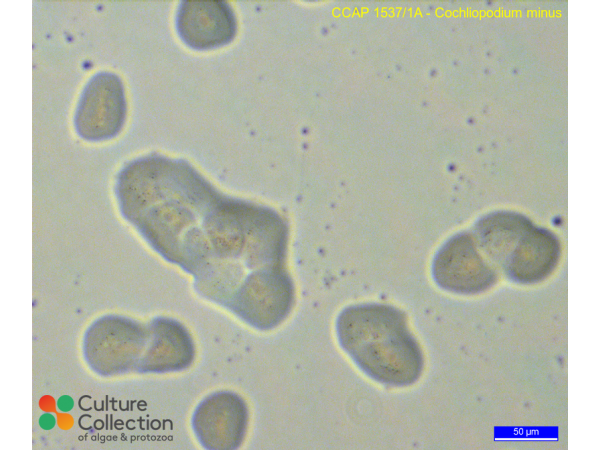References [ 9 ]
Kudryavtsev A (2006) "Minute" species of Cochliopodium (Himatismenida): Description of three new fresh- and brackish-water species with a new diagnosis for Cochliopodium minus Page, 1976. European Journal of Protistology 42: 77-89.
Dyková I, Lom J & Macháčková B (1998) Cochliopodium minus, a scale-bearing amoeba isolated from organs of perch Perca fluviatilis. Diseases of Aquatic Organisms 34: 205-210.
DOI: none
Kudryavtsev A, Wylezich C & Pawlowski J (2011) Ovalopodium desertum n. sp. and the phylogenetic relationships of Cochliopodiidae (Amoebozoa). Protist 162: 571-589.
Geisen S, Kudryavtsev A, Bonkowski M & Smirnov A (2014) Discrepancy between species borders at morphological and molecular levels in the genus Cochliopodium (Amoebozoa, Himatismenida), with the description of Cochliopodium plurinucleolum n. sp. Protist 165: 364-383.
Tekle YI (2014) DNA barcoding in Amoebozoa and challenges: The example of Cochliopodium. Protist 165: 473-484.
Tekle YI & Williams JR (2016) Cytoskeletal architecture and its evolutionary significance in amoeboid eukaryotes and their mode of locomotion. Royal Society Open Science 3: 160283.
Tekle YI & Wood FC (2017) Longamoebia is not monophyletic: Phylogenomic and cytoskeleton analyses provide novel and well-resolved relationships of amoebozoan subclades Molecular Phylogenetics and Evolution 114: 249-260.
Wood FC, Heidari A & Tekle YI (2017) Genetic Evidence for Sexuality in Cochliopodium (Amoebozoa) Journal of Heredity 108: 769-779.
Melton III JT, Singla M, Wood FC, Collins SJ & Tekle YI (2019) Three New Freshwater Cochliopodium Species (Himatismenida, Amoebozoa) from the Southeastern United States Journal of Eukaryotic Microbiology 67: 154-166.
Sequences [ 4 ]
EMBL/Genbank Links
(Bold text = submission by CCAP staff or collaborators)
Division/Phylum: Amoebozoa Class: Discosea
Note: for strains where we have DNA barcodes we can be reasonably confident of identity, however for those not yet sequenced we rely on morphology
and the original identification, usually made by the depositor. Although CCAP makes every effort to ensure the correct taxonomic identity of strains, we cannot guarantee
that a strain is correctly identified at the species, genus or class levels. On this basis users are responsible for confirming the identity of the strain(s) they receive
from us on arrival before starting experiments.
For strain taxonomy we generally use AlgaeBase for algae and
Adl et al. (2019) for protists.
| Attributes |
| Authority | (Page) Page 1976 |
| Isolator | Page (1965) |
| Collection Site | pond Madison, Wisconsin, USA |
| Notes |
Isolated via plating and migration; clonal culture |
| Axenicity Status |
Monoxenic |
| Area |
North America |
| Country |
USA |
| Environment |
Freshwater |
| GMO |
No |
| Group |
Protozoa |
| In Scope of Nagoya Protocol |
No |
| ABS Note |
Collected pre Nagoya Protocol. No known Nagoya Protocol restrictions for this strain. |
| Collection Date |
1965 |
| Original Designation |
47 |
| Pathogen |
Not pathogenic: Hazard Class 1 |
| Strain Maintenance Sheet |
SM_4wk_AmoebaeAgar.pdf |
| Toxin Producer |
Not Toxic / No Data |
| Type Culture |
Yes |
| Taxonomy WoRMS ID |
|
| Formerly Listed in CCAP as | Hyalodiscus actinophorus var. minor |

